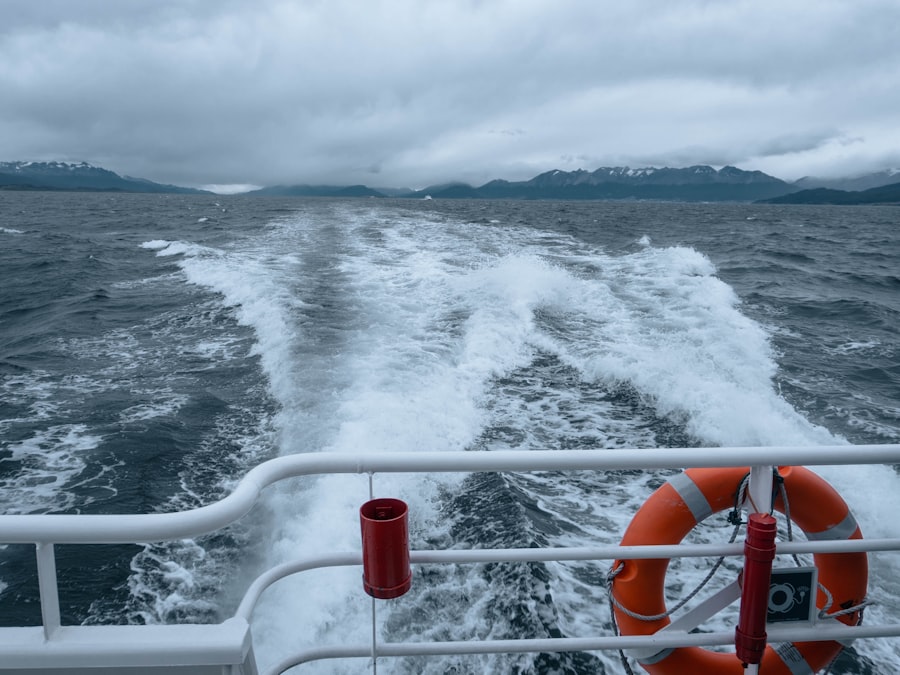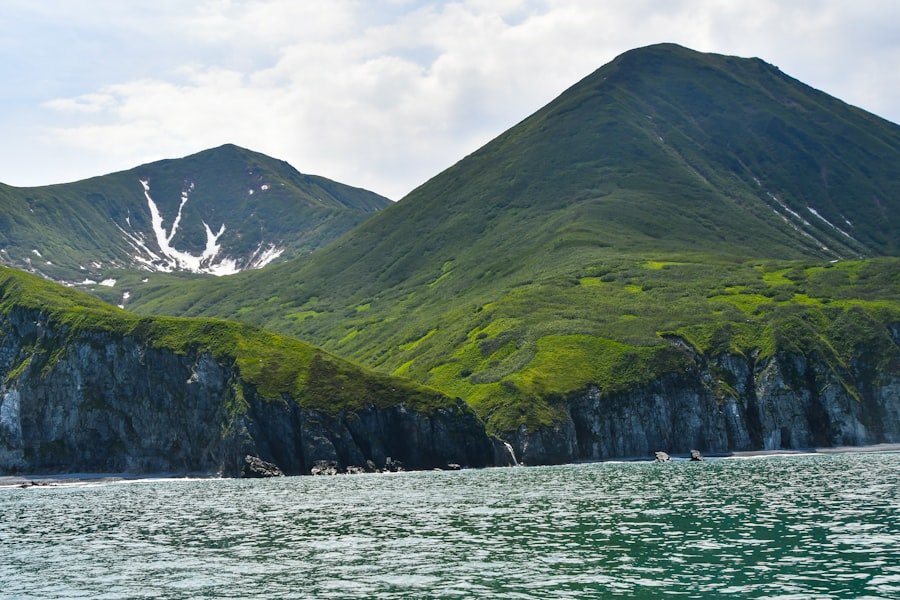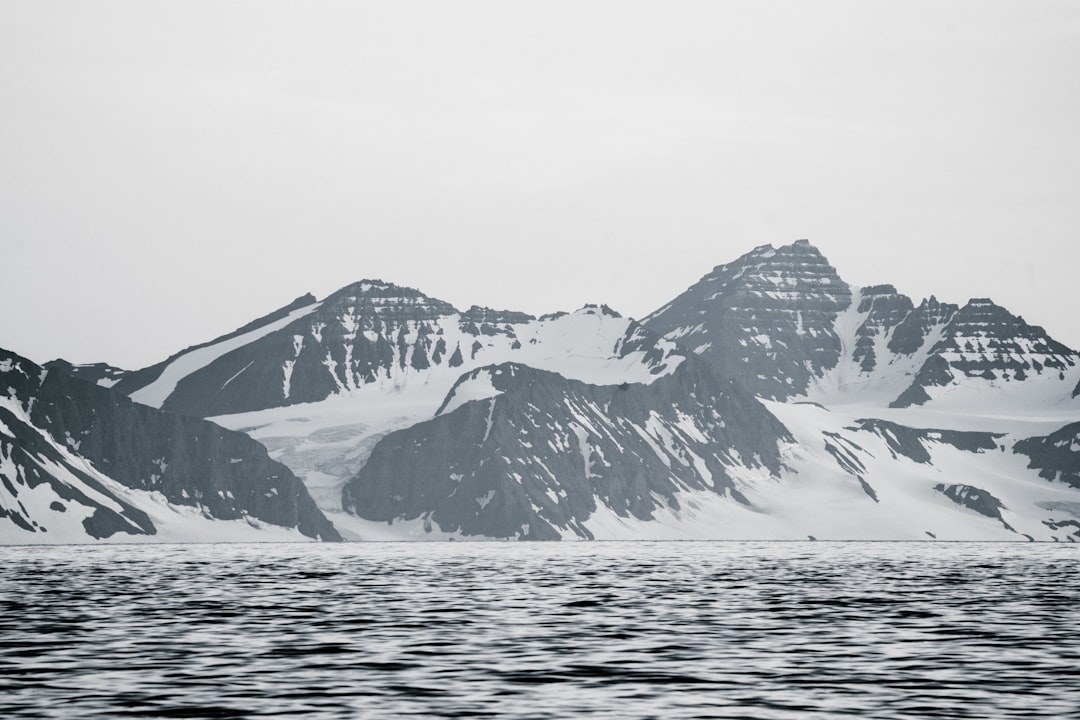The Arctic region is undergoing a profound transformation, driven primarily by climate change and the resulting melting of sea ice. This shift has opened up new maritime pathways that were previously inaccessible, presenting both opportunities and challenges for global shipping. As the ice recedes, the Arctic is emerging as a new frontier for sea routes, attracting the attention of shipping companies, governments, and environmentalists alike.
The implications of this change are far-reaching, affecting not only trade and commerce but also geopolitics and environmental conservation. The changing Arctic landscape is not merely a consequence of warmer temperatures; it represents a significant alteration in global shipping dynamics. Traditional routes, such as the Suez Canal and the Panama Canal, have long dominated international trade.
However, the emergence of Arctic sea routes offers a tantalizing alternative that promises to reduce transit times between major markets. As nations grapple with the implications of these new pathways, the Arctic is becoming a focal point for discussions about navigation, resource extraction, and environmental stewardship.
Key Takeaways
- The Arctic is becoming a new frontier for sea routes due to melting ice and increased accessibility.
- The Northwest Passage offers a challenging but potentially lucrative route through Canada’s Arctic Archipelago.
- The Northern Sea Route along Russia’s Arctic coastline provides an alternative to traditional shipping lanes.
- Navigating the Arctic presents challenges such as ice, extreme weather, and environmental concerns.
- Arctic sea routes offer advantages such as shorter transit times and reduced fuel consumption for shipping.
The Northwest Passage: Navigating Through Canada’s Arctic Archipelago
The Northwest Passage, a historic maritime route through Canada’s Arctic Archipelago, has long been a subject of intrigue and exploration. For centuries, explorers sought this elusive passage, which connects the Atlantic and Pacific Oceans. With the ongoing effects of climate change, this once-icy corridor is becoming increasingly navigable, allowing vessels to traverse its waters during certain months of the year.
The potential for commercial shipping through the Northwest Passage has sparked interest from various stakeholders, including shipping companies eager to capitalize on shorter routes. Navigating the Northwest Passage is not without its complexities. The region’s unique geography presents challenges such as shifting ice patterns and unpredictable weather conditions.
While some areas may be ice-free during summer months, others remain perilously blocked by ice floes. Mariners must possess a deep understanding of the local environment and be prepared for rapid changes in conditions. Additionally, the passage’s remote location necessitates careful planning and coordination with local authorities to ensure safe navigation through these pristine yet treacherous waters.
The Northern Sea Route: Exploring Russia’s Arctic Coastline

On the other side of the Arctic, the Northern Sea Route (NSR) along Russia’s coastline offers another promising maritime corridor. This route has gained attention as an alternative to traditional shipping lanes, particularly for vessels traveling between Europe and Asia. The NSR is characterized by its relatively direct path and shorter distances compared to other routes.
As ice melts in the region, Russia has actively promoted the NSR as a viable option for international shipping, investing in infrastructure and icebreaker support to facilitate navigation. However, navigating the Northern Sea Route comes with its own set of challenges. The region’s harsh climate and unpredictable ice conditions can pose significant risks to vessels.
Additionally, geopolitical considerations play a crucial role in the management of this route. Russia’s control over the NSR raises questions about access rights and international regulations, prompting discussions among nations about how to balance economic interests with environmental protection and indigenous rights.
Challenges of Navigating the Arctic: Ice, Weather, and Environmental Concerns
| Challenges | Description |
|---|---|
| Ice | The presence of icebergs and sea ice can make navigation difficult and hazardous. |
| Weather | Arctic weather can be unpredictable, with storms and fog reducing visibility and making navigation challenging. |
| Environmental Concerns | Environmental factors such as sensitive ecosystems and wildlife conservation efforts must be considered when navigating the Arctic. |
Navigating the Arctic is fraught with challenges that extend beyond mere ice conditions. The region’s weather patterns can be highly unpredictable, with sudden storms and fog complicating navigation efforts. Mariners must be equipped with advanced weather forecasting tools and possess a keen awareness of local conditions to ensure safe passage.
Moreover, the presence of icebergs and shifting pack ice can create hazardous situations that require constant vigilance and adaptability. Environmental concerns also loom large in discussions about Arctic navigation. Increased shipping activity raises questions about potential oil spills, pollution, and disturbances to fragile ecosystems.
The Arctic is home to unique wildlife and indigenous communities that depend on its resources for their livelihoods. As shipping traffic increases, it becomes imperative to strike a balance between economic development and environmental conservation to protect this delicate region from irreversible harm.
Advantages of Arctic Sea Routes: Shorter Transit Times and Reduced Fuel Consumption
The allure of Arctic sea routes lies in their potential advantages for global shipping. One of the most significant benefits is the promise of shorter transit times between major markets. For instance, vessels traveling from Europe to Asia can save considerable time by utilizing the Northwest Passage or Northern Sea Route instead of traditional routes that navigate through congested waterways like the Suez Canal.
This reduction in travel time not only enhances efficiency but also allows companies to respond more swiftly to market demands. In addition to time savings, Arctic sea routes offer the potential for reduced fuel consumption. Shorter distances translate into lower fuel costs, which can significantly impact a shipping company’s bottom line.
As fuel prices continue to fluctuate, the economic incentive to explore these new pathways becomes increasingly compelling. However, it is essential to consider that these advantages must be weighed against the environmental costs associated with increased shipping activity in a fragile ecosystem.
The Role of Technology in Navigating the Arctic: Icebreakers, Satellite Navigation, and Weather Forecasting

Technology plays a pivotal role in facilitating safe navigation through the Arctic’s challenging waters. Icebreakers are essential vessels designed to clear paths through thick ice, ensuring that commercial ships can traverse these routes safely. Countries like Russia have invested heavily in their icebreaker fleets to support increased shipping activity along the Northern Sea Route.
These powerful vessels are equipped with advanced technology that allows them to navigate through treacherous ice conditions while providing critical support for other ships. In addition to icebreakers, satellite navigation systems have revolutionized maritime travel in the Arctic. Accurate positioning data enables mariners to plot their courses with precision, reducing the risk of accidents in icy waters.
Furthermore, advancements in weather forecasting technology provide vital information about changing conditions, allowing ships to make informed decisions about their routes. As technology continues to evolve, it will play an increasingly important role in ensuring safe and efficient navigation through this remote region.
International Cooperation in the Arctic: Legal and Political Considerations for Sea Routes
The changing dynamics of Arctic navigation necessitate international cooperation among nations with interests in the region. Legal frameworks governing maritime activities are crucial for establishing guidelines that promote safe navigation while addressing environmental concerns. The United Nations Convention on the Law of the Sea (UNCLOS) provides a foundation for regulating maritime boundaries and resource management in international waters.
However, geopolitical tensions can complicate cooperation efforts in the Arctic. As countries vie for control over valuable resources and strategic shipping routes, discussions about governance become increasingly complex. Collaborative initiatives among Arctic nations are essential for fostering dialogue and establishing shared protocols that prioritize safety and environmental protection while balancing national interests.
Environmental Impact of Increased Arctic Shipping: Balancing Economic Opportunities with Conservation Efforts
As shipping traffic increases in the Arctic, concerns about environmental impact become paramount. The delicate ecosystems of this region are particularly vulnerable to disturbances caused by human activity. Oil spills, waste discharge from vessels, and noise pollution can have devastating effects on marine life and indigenous communities that rely on these resources for their survival.
Balancing economic opportunities with conservation efforts requires a multifaceted approach that involves stakeholders from various sectors. Shipping companies must adopt sustainable practices that minimize their ecological footprint while governments implement regulations that protect sensitive areas from overexploitation. Engaging indigenous communities in decision-making processes is also crucial for ensuring that their traditional knowledge informs conservation strategies.
The Future of Arctic Navigation: Potential for Commercial Shipping, Tourism, and Resource Exploration
The future of Arctic navigation holds immense potential for commercial shipping, tourism, and resource exploration. As climate change continues to reshape the region’s landscape, opportunities for new trade routes will likely expand further. Shipping companies are already exploring these possibilities as they seek to capitalize on shorter transit times and reduced costs associated with Arctic sea routes.
Tourism is another burgeoning sector in the Arctic region, attracting adventurers eager to experience its breathtaking landscapes and unique wildlife. However, increased tourism must be managed carefully to prevent negative impacts on local communities and ecosystems. Additionally, resource exploration—particularly for oil and gas—poses both economic opportunities and environmental risks that require careful consideration as nations navigate their interests in this rapidly changing landscape.
Indigenous Perspectives on Arctic Sea Routes: Traditional Knowledge and Cultural Impacts
Indigenous communities have lived in harmony with the Arctic environment for millennia, possessing invaluable traditional knowledge about its ecosystems and resources. As new sea routes emerge and commercial activities increase, it is essential to incorporate indigenous perspectives into discussions about navigation and resource management. Their insights can provide critical guidance on sustainable practices that respect both cultural heritage and environmental integrity.
Indigenous communities may face disruptions to their traditional ways of life as maritime traffic increases in their territories. Engaging with these communities in meaningful ways ensures that their voices are heard in decision-making processes related to Arctic navigation.
Navigating the Arctic Safely: Best Practices for Mariners and the Importance of Risk Management
Navigating the Arctic safely requires adherence to best practices that prioritize risk management at every stage of a voyage. Mariners must be well-trained in ice navigation techniques and equipped with up-to-date information about local conditions before embarking on their journeys. Developing contingency plans for emergencies is also crucial given the unpredictable nature of Arctic weather.
Collaboration among mariners is essential for sharing knowledge and experiences related to navigating these challenging waters. Establishing networks among shipping companies can facilitate information exchange about best practices while fostering a culture of safety within the industry. Ultimately, ensuring safe navigation through the Arctic hinges on a commitment to continuous learning and adaptation as conditions evolve in this dynamic environment.
In conclusion, as the Arctic transforms into a new frontier for sea routes, it presents both opportunities and challenges that require careful consideration from all stakeholders involved. Balancing economic interests with environmental stewardship will be crucial as nations navigate this evolving landscape while respecting indigenous perspectives and traditional knowledge.
The opening of Arctic Sea Routes due to melting ice caps is reshaping global shipping dynamics, offering shorter paths between major ports and reducing transit times. This transformation is not only altering trade routes but also raising environmental and geopolitical concerns. For a deeper understanding of the implications of these changes, you can explore a related article on Arctic navigation and its global impact by visiting this page. This resource provides insights into the challenges and opportunities presented by the evolving Arctic landscape.
WATCH NOW! Unlocking Disaster: 7 Choke Points That Could Fracture Our Connected World Overnight
FAQs
What are Arctic sea routes?
Arctic sea routes are shipping routes that pass through the Arctic region, including the Northern Sea Route and the Northwest Passage. These routes are becoming increasingly accessible due to melting sea ice caused by climate change.
Why are Arctic sea routes becoming more important?
Arctic sea routes are becoming more important due to the melting of sea ice, which is making these routes more accessible for shipping and transportation. This has the potential to significantly reduce shipping distances and costs for certain trade routes.
What are the potential benefits of using Arctic sea routes?
The potential benefits of using Arctic sea routes include shorter shipping distances, reduced fuel consumption, lower transportation costs, and increased access to natural resources in the Arctic region.
What are the challenges of using Arctic sea routes?
Challenges of using Arctic sea routes include harsh weather conditions, limited infrastructure, potential environmental impacts, and the need for specialized ice-class vessels to navigate through icy waters.
How is the opening of Arctic sea routes impacting global trade?
The opening of Arctic sea routes is impacting global trade by providing new opportunities for shipping and transportation, potentially reducing shipping times and costs for certain trade routes, and opening up access to new markets and resources.
What are the environmental concerns associated with increased use of Arctic sea routes?
Environmental concerns associated with increased use of Arctic sea routes include the potential for oil spills, disturbance of fragile Arctic ecosystems, and the impact of increased shipping traffic on marine wildlife.
